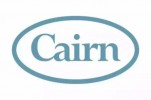Filter interviews by
Chevron Intern Interview Questions and Answers for Freshers
Chevron Intern Interview Experiences for Freshers
2 interviews found
I applied via Campus Placement and was interviewed before Dec 2023. There were 2 interview rounds.
Numerical & Logical reasoning, day of week problems, probability problems. 20 MCQ, 30 minutes.
(3 Questions)
- Q1. Can you describe a situation in which you had to address a disagreement with a teammate?
- Ans.
Addressed a disagreement with a teammate by discussing the issue calmly and finding a compromise.
Initiated a private conversation with the teammate to understand their perspective
Expressed my own thoughts and feelings on the matter without being accusatory
Listened actively to the teammate's concerns and tried to find common ground
Worked together to come up with a solution that satisfied both parties
- Q2. Can you describe a situation in which you took steps to de-escalate a conflict?
- Ans.
I de-escalated a conflict between two coworkers by facilitating a calm and open discussion.
Listened to both parties to understand their perspectives
Encouraged open communication and empathy
Suggested compromises and solutions to resolve the conflict
- Q3. What challenges did you face during teamwork, and how did you resolve them?
- Ans.
I faced challenges in teamwork related to communication and conflicting ideas, but resolved them through open dialogue and compromise.
Communication breakdowns led to misunderstandings - resolved by scheduling regular team meetings to discuss progress and address any issues.
Conflicting ideas caused tension - resolved by encouraging open dialogue and compromise to find common ground.
Unequal distribution of tasks created ...
Interview Preparation Tips
I applied via Job Fair and was interviewed in Apr 2024. There was 1 interview round.
Numerical Reasoning, Verbal Reasoning, Diagram or Logical test
Interview Preparation Tips
Top trending discussions






Interview questions from similar companies

I applied via Recruitment Consultant and was interviewed before Apr 2020. There were 3 interview rounds.
Interview Questionnaire
1 Question
- Q1. Process related
Interview Preparation Tips

I applied via Campus Placement and was interviewed in Dec 2016. There were 2 interview rounds.
Interview Preparation Tips
Experience: HR was really friendly and discussed resume in detail.
Round: Technical Interview
Experience: Had more discussion on technical terms on resume.
Round: Technical Interview
Experience: Asked questions on Programming and questions related to course work mentioned in the resume. The interview was completely candidate driven.
College Name: IIT Madras

I applied via Campus Placement and was interviewed in Dec 2016. There were 2 interview rounds.
Interview Preparation Tips
Experience: HR was really friendly and asked about projects in the resume.
Round: Technical Interview
Experience: Interviewer asked questions related to programming and algorithms.
Round: Technical Interview
Experience: Interviewer asked all technical details inside the resume. This round was more technical. More emphasis was on problem solving skills.
College Name: IIT Madras

I applied via Campus Placement and was interviewed in Dec 2016. There were 4 interview rounds.
Interview Preparation Tips
Experience: There were totally 8 sections to the test. But they could be broadly put under 4 categories. Firstly all questions were compulsory to attempt and there was no negative marking. Aptitude: Basic quantitative math questions were asked. There was one simple programming question where one could code in C/Java in your local IDE and upload the code file. It was a DO or DIE question, either you get the question and proceed to the next questions of the test or the test gets stopped if the code is not successfully compiled within 5 attempts. This programming question, as was told was an important criteria to filter out candidates for the next round. There was a descriptive question asking about a recent team project done.
Tips: Achievements in sports and other extra curricular activities are valued. Mention them in the resume, if applicable.
Duration: 1 hour 30 minutes
Round: Technical Interview
Experience: In this round, they look for the candidate's experience in coding in whatever language mentioned in the resume - I was asked to write some simple codes in c. I was also asked to explain some projects from the resume.
Tips: basic knowledge of data structures, resume preparation
Round: Technical + HR Interview
Experience: In this round, the questions were mostly based on the resume and the projects done. Also, HR questions like What do you know about Schlumberger, How do you perform in a team, What makes you unique from the other candidates etc. were asked. They also ask if you have any questions from your side - Better to ask questions if you have one or if you can't think upon any specific question, ask them a doubt from whatever they have said(usually they say a lot about their company and principles before they ask you for questions)
Tips: Prepare for a HR interview separately, resume preparation
College Name: IIT Madras

I applied via Naukri.com and was interviewed before Jun 2020. There was 1 interview round.
Interview Questionnaire
28 Questions
- Q1. What is mean by safety
- Ans.
Safety refers to the condition of being protected from harm, danger, or injury.
Safety involves taking measures to prevent accidents and injuries
It includes following rules and regulations to ensure a safe environment
Safety can be achieved through proper training and education
Examples of safety measures include wearing protective gear, using safety equipment, and practicing safe behaviors
Safety is important in all indus...
- Q2. What is LEL
- Ans.
LEL stands for Lower Explosive Limit and is the minimum concentration of a gas or vapor in air that can ignite.
LEL is a safety term used in industries dealing with flammable gases and liquids.
It is expressed as a percentage of the gas or vapor in air.
If the concentration of the gas or vapor is below the LEL, it is too lean to ignite.
If the concentration is above the LEL, it is too rich and can ignite.
For example, the L...
- Q3. What is RA
- Q4. What is JSA/JHA
- Ans.
JSA/JHA stands for Job Safety Analysis/Job Hazard Analysis. It is a process of identifying potential hazards and risks in a job or task.
JSA/JHA is a systematic approach to identify and mitigate potential hazards in a job or task
It involves breaking down a job or task into steps and analyzing each step for potential hazards
The analysis includes identifying the hazards, assessing the risks, and implementing controls to m...
- Q5. Role of HSE
- Ans.
HSE plays a crucial role in ensuring the safety and well-being of employees and the environment.
HSE stands for Health, Safety, and Environment.
It involves identifying and assessing potential hazards and implementing measures to control or eliminate them.
HSE also includes training employees on safety procedures and emergency response plans.
Examples of HSE measures include wearing personal protective equipment, conductin...
- Q6. What is Hchem
- Ans.
Hchem is not a known term or acronym in the engineering field.
Hchem is not a commonly used term in engineering
It is possible that the interviewer misspoke or meant to ask a different question
Without more context, it is difficult to provide a more specific answer
- Q7. What is Hazop
- Ans.
Hazop is a structured and systematic technique used to identify potential hazards and operability problems in industrial processes.
Hazop stands for Hazard and Operability Study
It involves a team of experts analyzing a process to identify potential hazards and operability issues
Hazop is commonly used in the chemical, oil and gas, and pharmaceutical industries
The process involves breaking down the process into smaller pa...
- Q8. What is confined space
- Ans.
Confined space refers to an area that is enclosed and has limited access and ventilation.
Examples include tanks, silos, sewers, and tunnels.
Workers entering confined spaces must follow safety protocols and use specialized equipment.
Hazards in confined spaces include lack of oxygen, toxic gases, and physical obstructions.
Proper training and communication are crucial for working in confined spaces.
- Q9. What is work at height
- Ans.
Work at height refers to any task performed at a height where a person could fall and injure themselves.
Work at height involves working on ladders, scaffolding, roofs, or any other elevated surface
It is important to use appropriate safety equipment such as harnesses, guardrails, and safety nets
Workers should be trained on how to safely work at height and how to properly use safety equipment
Examples of work at height in...
- Q10. Hazard of confined space
- Ans.
Confined spaces pose a significant hazard due to limited entry and exit points, poor ventilation, and potential for hazardous substances.
Limited entry and exit points can make it difficult to escape in case of an emergency
Poor ventilation can lead to a buildup of toxic gases or lack of oxygen
Potential for hazardous substances such as chemicals, fumes, or dust
Examples include tanks, silos, sewers, and tunnels
Proper trai...
- Q11. Precautions of confined space
- Ans.
Precautions to be taken while working in confined spaces
Proper ventilation and air quality testing
Use of personal protective equipment
Proper lighting and communication equipment
Training and certification for workers
Emergency rescue plan in place
- Q12. What is LEL&UEL
- Ans.
LEL&UEL stands for Lower Explosive Limit and Upper Explosive Limit respectively. They are the minimum and maximum concentrations of a flammable gas or vapor in air that can ignite.
LEL is the lowest concentration of a gas or vapor that can ignite
UEL is the highest concentration of a gas or vapor that can ignite
Concentrations between LEL and UEL are considered flammable
LEL and UEL vary depending on the gas or vapor
LEL an...
- Q13. What is competent person
- Q14. What is fire
- Ans.
Fire is a chemical reaction that releases heat, light, and various gases.
Fire is a rapid oxidation process that occurs when fuel (such as wood, paper, or gasoline) combines with oxygen in the presence of heat or a spark.
It releases heat, light, and various gases such as carbon dioxide, water vapor, and nitrogen oxides.
Fire can be beneficial (such as for cooking or heating) or destructive (such as in wildfires or house ...
- Q15. Types of fire
- Ans.
There are four types of fire: Class A, Class B, Class C, and Class D.
Class A fires involve ordinary combustibles such as wood, paper, or cloth.
Class B fires involve flammable liquids or gases such as gasoline, oil, or propane.
Class C fires involve electrical equipment such as appliances, wiring, or circuit breakers.
Class D fires involve combustible metals such as magnesium, titanium, or sodium.
- Q16. Type of extinguisher
- Ans.
There are different types of fire extinguishers for different types of fires.
Water extinguishers for Class A fires (wood, paper, cloth, etc.)
CO2 extinguishers for Class B and C fires (flammable liquids and electrical fires)
Dry chemical extinguishers for Class A, B, and C fires
Foam extinguishers for Class A and B fires
Wet chemical extinguishers for Class K fires (cooking oils and fats)
- Q17. Modes of heat transfer
- Ans.
Modes of heat transfer include conduction, convection, and radiation.
Conduction is the transfer of heat through a material without any movement of the material itself.
Convection is the transfer of heat through the movement of fluids, such as air or water.
Radiation is the transfer of heat through electromagnetic waves, such as from the sun or a fire.
- Q18. How to prevent fire
- Ans.
Preventing fire requires proper handling of flammable materials and regular maintenance of electrical equipment.
Store flammable materials in designated areas away from heat sources
Regularly inspect and maintain electrical equipment
Install smoke detectors and fire extinguishers in appropriate locations
Train employees on fire safety procedures and evacuation plans
- Q19. What is msds
- Ans.
MSDS stands for Material Safety Data Sheet.
MSDS provides information about hazardous chemicals and substances.
It includes information about the physical and chemical properties of the substance, health hazards, precautions for safe handling and use, and emergency procedures.
MSDS is required by law for all hazardous chemicals and substances used in the workplace.
It is important to read and understand the MSDS before usi...
- Q20. How to do firefighting
- Ans.
Firefighting involves identifying and extinguishing fires to prevent damage and loss of life.
Assess the situation and determine the type and size of fire
Use appropriate firefighting equipment such as fire extinguishers, hoses, and pumps
Follow safety protocols and wear protective gear
Coordinate with other firefighters and emergency responders
Evacuate people from the affected area
Monitor the situation and ensure the fire
- Q21. How to prevent the accident
- Ans.
Prevent accidents by identifying potential hazards and implementing safety measures.
Conduct regular safety audits and risk assessments
Provide proper training and education to employees
Implement safety protocols and procedures
Use appropriate safety equipment and gear
Encourage a culture of safety and accountability
Regularly review and update safety policies and procedures
- Q22. How to investigate the accident
- Ans.
To investigate an accident, follow a systematic approach involving data collection, analysis, and identification of root causes.
Gather all available information about the accident, including eyewitness accounts, photographs, and any relevant documents or records.
Conduct interviews with individuals involved in the accident to gather their perspectives and insights.
Examine the accident scene for physical evidence, such a...
- Q23. Emergency procedure
- Q24. What is H2s
- Ans.
H2S is a colorless, flammable, and toxic gas with a strong odor of rotten eggs.
H2S is commonly known as hydrogen sulfide.
It is produced naturally by the breakdown of organic matter and is found in natural gas, crude oil, and volcanic gases.
It is highly toxic and can cause respiratory failure, loss of consciousness, and even death.
H2S is used in various industries such as oil and gas, mining, and pulp and paper.
It is al...
- Q25. Properties of H2s
- Ans.
H2S is a colorless, flammable, and toxic gas with a strong odor of rotten eggs.
H2S is highly flammable and can ignite easily
It is toxic and can cause respiratory failure
It has a distinctive odor of rotten eggs
H2S is used in the production of sulfuric acid and in the petroleum industry
- Q26. Hirerchy procedure
- Q27. Permissible exposure limit of H2s,co,co2,methane
- Ans.
Permissible exposure limits (PEL) are the maximum allowable concentrations of hazardous substances in the workplace.
H2S: PEL is 10 ppm (parts per million) over an 8-hour workday
CO: PEL is 50 ppm over an 8-hour workday
CO2: No specific PEL, but recommended exposure limit is 5,000 ppm over an 8-hour workday
Methane: No specific PEL, but recommended exposure limit is 1,000 ppm over an 8-hour workday
- Q28. Short term exposure limit of H2s
- Ans.
Short term exposure limit (STEL) of H2S is 10 ppm.
STEL is the maximum concentration of a substance that a worker can be exposed to for a short period of time without suffering from immediate or long-term health effects.
The STEL for H2S is set at 10 ppm (parts per million) by OSHA (Occupational Safety and Health Administration).
Exposure to H2S at levels above the STEL can cause symptoms such as eye irritation, headache,...
Interview Preparation Tips

I applied via Naukri.com and was interviewed in Feb 2022. There were 4 interview rounds.

(1 Question)
- Q1. Core Java, spring jpa, relationship like one to one, one to many, many to oneetc, composit key. More important many questions come from your cv like what you did in your project
(1 Question)
- Q1. Just basic behaviour questions, also be ready with some technical questions as well
(1 Question)
- Q1. Only joining discussion and formalities 😃😃
Interview Preparation Tips

I applied via Naukri.com and was interviewed in Dec 2024. There were 2 interview rounds.
Just easy or medium level leetcode questions
The topic was how AI is affecting softare developer
Interview Preparation Tips

(1 Question)
- Q1. Mostly on c++ 11,pointers,move etc
Chevron Interview FAQs
Tell us how to improve this page.
Chevron Interviews By Designations
- Chevron Intern Interview Questions
- Chevron Network Security Engineer Interview Questions
- Chevron Scaffolding Supervisor Interview Questions
- Chevron Chemical Engineer Interview Questions
- Chevron Senior Cloud Engineer Interview Questions
- Chevron Financial Interview Questions
- Chevron Operations Manager Interview Questions
- Chevron Restaurant Manager Interview Questions
- Show more
Interview Questions for Popular Designations
- Internship Trainee Interview Questions
- Software Developer Intern Interview Questions
- HR Intern Interview Questions
- Summer Intern Interview Questions
- Internal Auditor Interview Questions
- Software Engineer Intern Interview Questions
- Data Science Intern Interview Questions
- Data Analyst Intern Interview Questions
- Show more
Chevron Intern Interview Process for Freshers
based on 2 interviews
Interview experience
Interview Questions from Similar Companies
Fast track your campus placements
|
2nd Engineer
13
salaries
| ₹0.8 L/yr - ₹1.8 L/yr |
|
Software Engineer
5
salaries
| ₹18.3 L/yr - ₹18.3 L/yr |
|
Technical Lead
5
salaries
| ₹44.5 L/yr - ₹48 L/yr |
|
Electro Technical Officer
4
salaries
| ₹0.5 L/yr - ₹1.8 L/yr |
|
Lead Planning Engineer
4
salaries
| ₹35 L/yr - ₹35 L/yr |

Petrofac

Schlumberger

Saudi Aramco

Baker Hughes
- Home >
- Interviews >
- Chevron Interview Questions >
- Chevron Intern Interview Questions for Fresher











